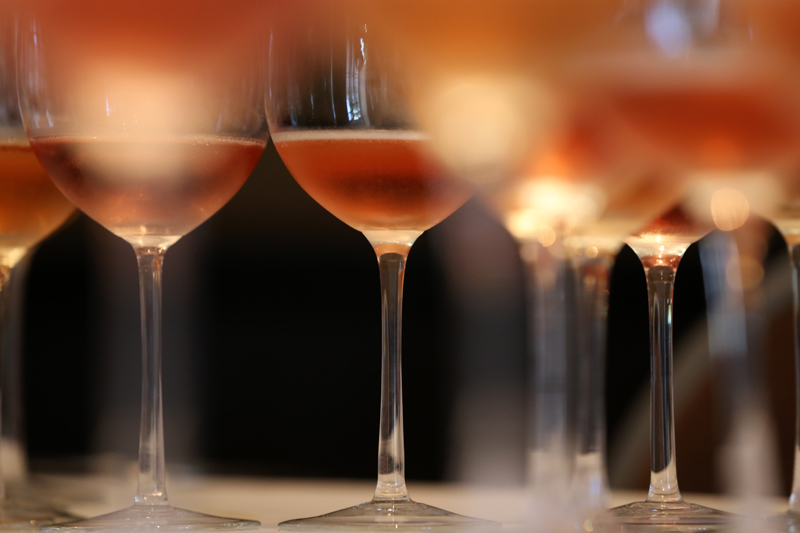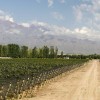While Malbec is the best-known variety in Argentina, those who search a little deeper are surprised by the huge amount of styles and wines that exist. Among them, sparkling wines.
For an Argentine, toasting with bubbles is the norm for a birthday, an anniversary or to celebrate the end of the year. But also for a Tuesday afternoon or a Thursday lunch, they drink them because they enjoy them, with seafood or tapas on a terrace, from spring to summer.
Just as France, Spain and Italy have their own styles of bubbly, so Argentina offers its own unique flavour. In the last two years exports of sparkling wines have remained strong, with about 150 to 190 thousand, 12 bottle boxes. This figure includes Brazil, the United States, Chile and Uruguay who are already strong consumers of Argentine sparkling wines, with about 18 thousand boxes each. And if America is the first horizon, Latin American countries such as Colombia, Mexico and Peru, also have respectable figures.
Who drinks them? The Argentine consumer seems to be a good guide. According to the consumption of wines prepared by the STG consultancy, the main drinkers of sparkling wines are more than 40 years old. And Extra Brut is the most popular, with 7 out of 10 bottles, in a market of 60 million bottles a year, of which 4% is exported on average.
But beyond the volume, what intrigues the wine traveller today is how, in a country where red is king, sparkling wines of such crisp freshness can be produced. The secret is soon to be discovered: with vineyards between 1,200 and 1,600 meters high in Mendoza, the temperature conditions at the foot of the mountains are cold, even if they are at the gates of the desert.
Thus, the market for sparkling wines has gained a new depth of styles in recent years, with trends formed by the sparkling wines of the world. Here are some of the most interesting ones.
Well aged
In the last calendar year, two sparkling wines were presented to the market with 70 and 120 months of maturing on lees. Rosell Boher Grand Cuvée and Cruzat Millésimée 2006. Both of them raise the bar of everything that is produced using the traditional method, which already reaches 20 to 40 months. With healthy evolution in the bottle, they are approaching the second fullness like some of the great champagnes. Like freshly baked bread, yeasts and aromas of dried fruits, a new avant-garde style is available, that is worth trying.
Pinot blend with a twist of Malbec
High up in the mountains mainly Pinot Noir is cultivated as a base of sparkling wines. It is well known that it provides structure and an ethereal flavour for the production of foam. And as a varietal, it is worth trying some such as Chandon Cuvee Reserve, Escorihuela Pequeñas Producciones Rosé and Rosell Boher Rosé. In recent years, however, Malbec, made as Blanc de Noir, has been used as the base for some sparkling rosés. The idea is the same: to give structure and a more marked fruit character. Navarro Correas Malbec Brut Rosé, Finca La Linda Brut Rosé de Malbec and Tapiz Rosado de Malbec.
Very dry
There are a handful of very dry wines, which subserve the idea of an excellent balance in terms of flavour and maturity. Destacan Progenie I Brut Nature, Salentein Brut Nature, Cosecha Espacial Vintage, Gran Dante Brut Nature, Fin del Mundo Brut Nature 100% Pinot Noir, DV Brut Nature and the rare Colonia Las Liebres Brut Nature, made with Bonarda Blanc de Noir.
Chardonnay based whites
In the world of bubbly, Blanc de Blancs are considered la creme de la creme because they are difficult to achieve with high quality. Achieving complexity and longevity with Chardonnay demands working with grapes of excellence and impeccable elaboration. There are only a handful are made with high altitude grapes. You should try Familia Zuccardi Blanc de Blanc Cuvée Especial, María Codorníu and Chandon Cuvée Reserve.
Sweet ice
All over the world, Ice wines are getting popular. Sparkling wines of a certain sweetness and a little less gas designed for simple cocktails: a slice of cucumber or orange peel and they´re ready to drink. In our market, the trend has been growing strongly for about five years. From Chandon Delice, who inaugurated the idea, to Dilema, and Norton Cosecha Tardía, Dulcet and Las Perdices Sweet, among many others. Sweet wines have a solid and growing supply in cocktails. The consumers are happy.
Therefore, the next time you think of Argentina, in the shade of Malbec´s famous reds, don´t overlook a good bottle of sparkling wine, because will be rewarded with a clear, unforgettable flavour.



